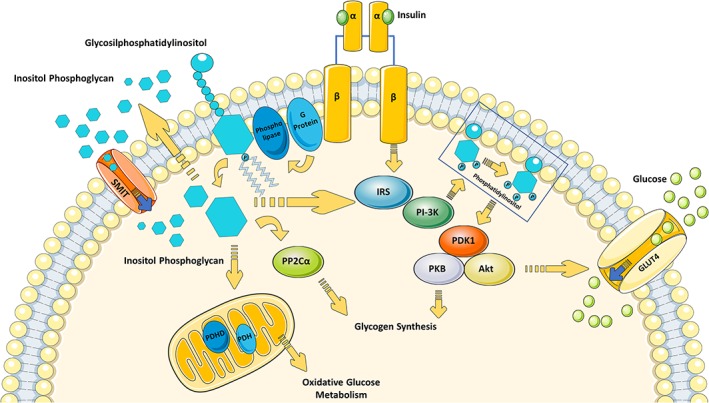Figure 1.

Role of inositol in insulin signalling pathway (inspired on Larner and Brautigan34). Upon binding with its receptor (IR), insulin induces IRS‐1 recruitment and activation. One of the principal IR/IRS target, PI3K, then generates Phosphatidilinositol to activate PDK1 and subsequently PKB/Akt. These actions are involved in GLUT4 translocation and in glycogen synthesis. According to the theory of Larner and Brautigan,34 IR activation might also be coupled to a heterotrimeric G protein, which in turn activates a phospholipase responsible for Glycosilphosphatidylinositol hydrolysis with the production of soluble inositol phosphoglycans. Upon insulin receptor activation, inositol phosphoglycans are released outside the cell and subsequently reimported by SMIT. Inositol phosphoglycans may act as a putative second insulin messenger. In the cytoplasm, inositol phosphoglycan binds to and allosterically activates PP2Cα and/or IRS, with the consequent direct stimulation of glycogen synthase. In the mitochondria, activated PDHP stimulates PDH and consequently glucose oxidative metabolism. Abbreviations: GLUT‐4 glucose transporter 4; GSK3, glycogen synthase kinase 3; IR, insulin receptor; IRS insulin receptor substrates; PDH, pyruvate dehydrogenase; PDHP, pyruvate dehydrogenase phosphatase; PDK‐1 phosphoinositide‐dependent kinase 1; PI3K, phosphoinositide 3 kinase; PKB/Akt, protein kinase B/Akt; SMIT, sodium/myo‐inositol transporter; PP2Cα, phosphoprotein phosphatase 2C alpha
